|
|
by Marcia Napier, Grain Valley Historical Society The first Grain Valley school was located on Lots I and 2 in the Finnell Addition in 1887. These two lots were north of the old Methodist church on Capelle Street in a building that later became the telephone office. In 1906, patrons voted to consolidate six schools; Capelle, Round Grove, Stony Point, Pink Hill, Oak Hill, and Grain Valley. Dr. William Johnson became School Board President of the newly Consolidated District No. 3. A three-room, two-year high school was built, presumably at the same location. I estimate the photograph was taken around 1900. Although there is a list of names on the back of the photo, it is difficult to match with the students since they are not in straight rows. My grandmother and her two sisters, the Sanders girls, are in the photo but due to the poor quality I cannot precisely identify them. In 1900, the oldest sister would have turned 13 years old, and nearing her last year of elementary school. From the list of students, many pioneer families are represented. Those new to Grain Valley would not know the families, but you may recognize the names as they appear on housing additions and street signs throughout the old part of town; the Cannon Addition, the Minter Addition, Gregg Street, and Wyatt Road. I am sure that the gentlemen with the mustache and top hat (to the left of the church window) is Dr. W. B. Johnston, the school board president. Next Week: Learn about the first brick school which also became the first four-year high school. The Grain Valley Historical Society Museum is located at 510 Main Street. Visit the Historical Society’s website, www.grainvalleyhistory.com, and follow the Society on Facebook, Twitter, and Instagram (@grainvalleyhistory). Grain Valley’s first school, located on Lots 1 and 2 in the Finnell addition in 1887. The above photo was taken around 1900.
Photo credit: Grain Valley Historical Society by Cathy Allie I have been slightly obsessed with Jeopardy lately, due to a new champion, James, who has amassed great amounts of money. I either tune in or watch it from the DVR, almost daily.
By the time you read this, he will have crossed the 2-million-dollar threshold, yet to be upended by a quick-thumbed speech therapist or airline pilot or mountain climber. He might be on his way to 3 million, but either way James’ knowledge base is impressive. He has got me thinking about my Jeopardy skills. There are days when I shout out an answer (of course in the form of a question) which has come from the deep recesses of my generally untested brain. I silently thank my junior history teacher Anthony McCord for sharing with me that FDR was the first sitting President to fly in a plane. I raise a hand to my Sunday School teachers for helping us memorize the books of the Bible in order or bless my dad for his love of an ice sport which makes it easy to recall that Gordie Howe’s nickname is Mr. Hockey. I have had some notable success in playing the game against my husband. I once “ran” the category Parts of Speech. I am a former English teacher so frankly, it would have been embarrassing not to. But then he smoked me on Billiard Games. There were lots of pool halls in his small hometown where he apparently hung out as a kid. Go figure that would come in handy in a hotly contested Jeopardy game. My daughter has joined in the quiz fun, primarily shouting out Pop Culture answers that someday her own children will call ancient history. “Who is Lady Gaga?” she says when the video comes up of the star in a Christmas tree headpiece. Oddly, she also knew most of the answers under Amphibian Anime as well. Those Geico gecko commercials are working, I think. Suffice it to say that categories like European Family Dynasties, Classical Music, Russian Literature, and Opera Arias are not my bag. Neither are World Geography, Scientific Mysteries, or Modern Artists. What’s left, you say? Well, I need a little different type category to succeed. I would be a master at the Never Make these Recipes Again category. Clue: ‘Orange in color, sweet in taste, this yam-based dish made your family puke.’ Answer: “What are sweet potato bombs?” In the category Pinterest Fails, the clue would be: ‘Excellent medium for children’s play and a tasty after school treat’ . Answer: “What is edible slime?” In the category I Would Never Do That Again, the clue would be ‘Packaged in boxes by approximate color,’ and the answer would be, “What is a home hair highlighting kit.” Don’t ask. I would run the category Stuff We Will Never Understand About Middle School Girls. “I’ll take Middle School for $400, Alex.” Clue: ‘Mgrblhnphnph’. Answer: “What is her first unintelligible phrase of the morning?” Possibly in the same category the $600 clue is ‘Currently going through any middle schooler’s head‘ and the answer is “What is I am being raised by wolves?” Maybe for $800 the clue is ‘5 weeks’. I hope that is the Daily Double, ‘cause I am betting it all. Answer: “What is how long is it since you have seen the floor of your room?” And I might just need a different host than good old Alex Trebek. I want a sassy 40-50’ish Melissa McCarthy look-a-like woman who appears to have washed her hair on Tuesday and this is now Friday. Maybe she would be wearing an Old Navy shirt from about 2006 with some unidentifiable stains because it is comfortable, and she never comes out from behind the podium because she is wearing yoga pants with a hole in an awkward spot and house slippers. If I stay out of the negative in the single Jeopardy round, she winks at me and says, “You go girl.” In the category of Things You Would Like Them to Say to You at the Doctor, where the clue is: ‘Wow’ and the answer is “Why are you are so thin?!,” she hollers, “I know that’s right!” My Final Jeopardy Round would need to be a working mom category and include something like Driving Multiple Places on Nearly No Gas Because I Know My Car, or Thawing Meat on the Dashboard While Driving Multiple Places, or What Do You Mean You are Out of Lunch Money? for me to make any cash and not go home in a respectable second place, broke as a joke. Just so you know, in the category of Dreams Deferred, the clue is ‘Not tomorrow, not the next day, and not ever,” and my answer would have to be, “When is Cathy headed to Jeopardy?” Cathy is a retired public school English teacher and Public Information Officer. My wife and I attended the same school in Miami, Florida, but that’s not how we met. In school, we really didn’t know each other.
We attended a pretty large school which had about 500 in our graduating class. I knew of her and she knew of me, but that was about it. And, what we knew, we really didn’t like. She was one of the smart kids. She was an honor student and part of the drama club. There were times when she would come to school dressed in strange costumes. In my mind, she was a little weird and not someone to whom I would be attracted. I was not an honor student and hung out with the other crowd. I had long hair, played in a band, and was comfortably numb most of the time. I was not someone she would be attracted to—and her mom probably didn’t want me coming around anyway. Later she confessed to me, “in the talent show when your band played, I used that time to use the restroom.” Our first meeting after high school was moving and monumental for me, but somewhat anticlimactic for her. I was attending a Bible study at a friend’s house and someone had invited her. When she arrived, I happened to answer the door and was immediately struck. I vividly remember seeing her big, beautiful brown eyes and delightful smile. She was the most beautiful woman in the room. I knew immediately that she was the one. Although most of high school was a blur for me, I recognized her. Being the romantic and excellent conversationalist that I am, I said, “I know you, you’re Barbara!” She chuckled, “No, Wayne, I’m Kim.” “Dang,” I thought, “Blew that one.” Thankfully, fate was on my side. She later confessed to a friend, “That’s Wayne Geiger. He cut his hair, has a tie on, and I can see his eyes!” I was beginning to wear on her already. To make a long story short, we became friends and our friendship blossomed into romance and eventually marriage. Attraction is a strange thing, isn’t it? In my interpersonal communication courses, I remind students that we are attracted to others in four ways: by appearance, proximity, similarity, and complementarity. Appearance is pretty straight forward. We look. We like. Proximity is less romantic, but equally powerful. The longer we’re around someone, the more we get to know them (think Beauty and the Beast). We look past the external, skin deep, appearance and look deeper into the person and are attracted to them. Sometimes, we’re attracted by similarity. We like people who are like us. This validates our belief and behavior. Finally, we are attracted by complementarity. This basically means, opposites attract. We’re attracted to a quality or trait that we don’t have--but admire in someone else. My wife and I were in this last category—total opposites. As a minister, I have performed more than 50 marriages over the years. One of the things that I try to get across to couples is that love and commitment are two different things. During a marriage ceremony, I will generally utter the traditional vows and say, “for better or worse, for richer or poorer, in sickness and in health, to death do us part.” All they hear is “blah, blah, blah.” They are incredibly nervous and didn’t come for a sermon. They just want to get married. Sometimes, my mind wanders and I think about couples that have experienced the “worse” and “sickness” in the vows. Naturally, I don’t want to be “Debbie Downer” and ask them, “are you prepared to stick it out if one of you gets a dreaded disease and ends up in a long-term care facility? There is a time and a place for everything, and the wedding ceremony is certainly not the place for that. What’s worse, they might not let me have cake at the reception. Generally, when couples meet, there is an initial interest or spark accompanied by butterflies in the stomach, a dry mouth, shallow breathing, and a rapid heart rate. Entering those symptoms into WebMD might cause you to rush to the emergency room. For most couples, those initial, bubbly feelings will wane in the coming months and years. “The wedding ceremony is an event, but the marriage is a process,” I remind them, “marriage is hard work.” Attraction creates the spark, but it takes work to keep the fire going. As the years go by, the cute little traits that gave you goose bumps when you were dating now produce irritation and frustration. Or, they have mannerisms or behaviors that you find disrespectful or annoying. We spend most of our time trying to correct and retrain our mate to mold and form them into the person that we want, and initially expected them, to be (they just didn’t know it). This can be a long, tiring, and perhaps fruitless endeavor. For more than three decades my wife has been trying to remind me to use a coaster under my glass. She is making some progress. Last year, I showed a 3% increase in productivity. We’re on track this year for a 3.8% increase barring any unforeseen setbacks. The problem with attraction is simple. We are all egocentric and utterly selfish. I remind couples that attraction and love are two totally different things. Attraction does not take into consideration the value and needs of the other person. Attraction merely says, “You make me happy.” This means we may like the way the other person looks or acts, etc. We have a euphoric feeling when they’re around. We’re attracted, or want to be around that person, because we find joy or happiness in what they have to offer us. So, in the end, it’s about us. Thus, the other person becomes an “object” of our potential happiness. They become a tool to be used. True love, on the other hand, is unselfish and sacrificial. True love puts the other person’s needs above you own and makes a covenant to do so, “till death do us part.” In the Bible, it says, “Love is patient and kind; love does not envy or boast; it is not arrogant or rude. It does not insist on its own way; it is not irritable or resentful; it does not rejoice at wrongdoing but rejoices with the truth. Love bears all things, believes all things, hopes all things, endures all things” (1 Corinthians 13:4-7). I often ask couples to replace the term “love” in the passage with their own name and say, “Mary is patient and kind” or “Steve does not envy or boast.” It was a spark that attracted me to my wife and commitment that has kept us together through better or worse. In our relationship, my wife and I try to keep God central and remember that we need to love, respect, and serve one another. We’ve also said through the years, “divorce is not an option, but murder is a possibility.” After three decades of marriage, we’re still working out the kinks and bugs—on both ends. We’re far from perfect. I’m trying to remember to use a coaster and put my clothes in the hamper and not on the hamper. She’s working on properly closing the glass door and leaving the thermostat alone. At that first glance, I was attracted to Barbara—a woman that I just met. However, I married Kim and we’re in it for the long haul. She is still the most beautiful woman in the room. Wayne Geiger is the Pastor of First Baptist Grain Valley, an Adjunct Associate Professor of Speech, and freelance writer. He sends out an email Bible devotion at Waynegeiger.com. Care Packages From Home, a local nonprofit organization, is hosting its annual Packing Party on Monday, June 10th from Noon—4:00pm at the Elks Lodge, 100 NE Brizendine Road, Blue Springs. Volunteers are needed to help pack up care packages and prepare them to ship out to soldiers overseas. Donations of items for the care packages are also needed. Some of the items most wanted by soldiers include: beef jerky, tuna packets, puzzle books, flavor packets for water, hard candies that can withstand extreme temperatures, cards/dice/games, small Nerf or stress balls, recent magazines, postage/stationery, bandanas, first aid kits, travel size toiletries, DVD movies, and paperback mystery books. Boxes are only 12”x12”x5.5”, so bulky or heavy items are not recommended. For more information, call 816-507-6891, email [email protected] or visit www.carepackagesfromhomekc.org. Volunteers will gather Monday, June 10th from Noon—4:00pm at the Elk’s Lodge in Blue Springs to pack up care packages for soldiers overseas. For more information, visit the Care Packages From Home website at www.carepackagesfromhome.org.
Photo courtesy: Care Packages From Home Grain Valley residents who are planning to do some spring cleaning this weekend can take advantage of the City’s City-Wide Clean Up event on Saturday, June 1st. This free community event will be held from 8:00am—2:00pm on June 1st to help Grain Valley residents dispose of unwanted items. Proof of residency is required (ie: water bill or driver’s license). Metal recycling is available. Residents are asked to bag loose items, such as insulation and other small items. Items that are NOT accepted include tires, paint, oil, refrigerators, air conditioners, bagged trash and yard waste or clippings. The drop off will be held at the Public Works Maintenance Facility, 405 James Rollo Drive, Grain Valley. The event will be held rain or shine. For more information, visit www.cityofgrainvalley.org or call 816-847-0091. The City of Grain Valley’s annual City Wide Clean Up Event will be held Saturday, June 1st from 8:00am—11:00am. Residents may drop off unwanted items at the Public Works Maintenance Facility, 405 James Rollo Drive.
Photo courtesy: City of Grain Valley Following a successful showing at the Class 4 Sectional meet in Odessa, Grain Valley Track and Field will be sending several athletes to the State Championships this weekend.
Royce Fisher broke a school record in the 3,200 meter with a time of 9:34.83 to qualify for state with a second place finish, and also qualified for the 1,600 meter with a time of 4:30.81. Senior Cole Hayes took third in the pole vault to qualify for state (12-00.00), and junior Jaiden Yarber qualified in two events, finishing third in the 110 meter hurdles and second in the 300 meter hurdles with a time of 40.04. Senior Tyler Luke qualified in four events, including a first place win in the 200 meter run (22.38). Luke teamed up with Nate Booker, Logan Pratt, and Mason Rogers to win first in the 4x100 relay and second in the 4x200 relay. The girls team had a successful run at Sectionals as well. Senior Morgan Scott took first in the 800 meter (2:22.17), and also qualified in the long jump competition. Scott was also a part of the 4x800 meter relay team of Valerie Holcomb, Kailey Larson, and Lilly Ogle who placed first with a time of 9:49.85. The girls 4x400 relay team of Avery Huffman, Gracelyn LaForge, Jayonna Perry, and Morgan Scott finished second with a time of 4:04.73. Perry, a sophomore, also took third in the 300 meter hurdles (45.22) and was a part of the 4x200 meter relay team (with Avery Huffman, Gracelyn LaForge, and Jordyn Weems) to finish fourth with a time of 1:48.86 by Marcia Napier, Grain Valley Historical Society For over one hundred years subscription schools existed in and around Grain Valley. In 1949, Jackson County’s schools were organized into 7 districts and all of the remaining rural schools were closed. Reorganization set boundaries and more often than not all of the rural school students did not end up in the same district. That was certainly true for Grain Valley. Stony Point, Pink Hill, Oak Hill, Round Grove and Capelle had all been closed for more than a decade, however, rural students were still attending elementary classes at Oakland, Murphy, Pueblo, Tarsney, Elm Grove, and Williams School. Due to boundary lines, Oakland School, located at the corner of Truman and Cartmill Roads and Murphy School on Murphy School Road became part of the Fort Osage R-1 District. Pueblo School on Corn Road near Colburn and Tarsney School on Buckner Tarsney Road just south of Colburn became part of the Lee’s Summit R-7 District. Elm Grove School on Stillhouse Road near old 40 Highway and Round Prairie in southeast Sni-a-Bar Township went to the Oak Grove R-6 District. Williams School west of Grain Valley became part of the Blue Springs R-4 District. However, many of the students attending these school actually lived within the boundaries of the Grain Valley R-5 District. In 1991, the Fort Osage Chapter, Daughters of the American Revolution compiled a book with the history of rural school which became part of the Fort Osage R-1 School District. For the book, they interviewed Mrs. Claude Dyer (Lorean) who started school at Oakland in 1899. The school was a frame building on a high point overlooking the Little Blue Creek, close to the Oakland Church. In the 1920’s the school building was purchased and moved to the intersection of Truman and Buckner Tarsney Roads and made into a store. A new brick school was built, which served until the end of the school term in 1949. The brick school was eventually torn down when Truman Road was re-routed in 1965. Pueblo School originally bore the name Webb, because a Mr. Webb lived in the house nearest the school. In the late 1880s when it was proposed that the school have a new name, Mr. Cannon the teacher, suggested Pueblo for Pueblo, Colorado, because he liked the name. Members of a debating society of the school discussed the name, and proposed it be accepted when they were told the name meant meeting place, for the school was a meeting place for their society, as well as, the meeting place for the community of farm families in the area. Next Week: Grain Valley’s first public school on Capelle Street. The Grain Valley Historical Society Museum is located at 510 Main Street. Visit the Historical Society’s website, www.grainvalleyhistory.com, and follow the Society on Facebook, Twitter, and Instagram (@grainvalleyhistory). Top photo: A Certificate of Approval as a Second Class School for the Pueblo School, dated April 1924. Ethel Johnson is listed as the teacher of the school.
Bottom photo: Oakland Brick school, circa 1920. Photo credit: Grain Valley Historical Society by Wayne Geiger  With an enormous amount of anxiety, I walk down the hallway to my classroom for the first day of a new semester of Public Speaking. I’ve worked as an Adjunct Professor in the arena of communication for over 10 years in four different institutions, but it never gets any easier. The students, scattered around the hall, are all buried in their mobile devices. “Here we go again,” I say to myself as I swipe my access card and open the classroom. Most of the students stagger in behind me like defeated prisoners of war. Under protest, they slump their bodies into their seats. Some choose quickly and strategically while others are forced to take the leftovers. I know the seat they choose today will likely be their seat for the entire semester. In addition, their table will determine their small groups and partners for team speech 4 in week 14. I also know that my capped class of 22 students will likely whittle down to 17 or so. I look around and wonder “Who will be the casualties this semester?” I nervously watch the clock and say, “Make sure to check your social media because in 5 minutes you belong to me.” Although I’ve been teaching speaking courses for more than a decade, the first day is always the same. I am more nervous than they are and I let them know this truth. They need to know that we all have an element of social anxiety from time to time. I hand out the syllabus to each student and say, “My name is Wayne and I want to welcome you to Introduction to Chemistry.” A few students chuckle while a few others have a genuine look of concern on their face. I smile and say, “Just kidding—it’s much worse than chemistry—it’s public speaking. I will expect you to get up in front of all these angry-looking people this semester and wow them with your superior communication skills.” Some crack an awkward smile. Some chuckle. Some think, “Man, this is going to be a long semester.” “This syllabus,” I tell them, “is my gift to you. Everything you need to know about this course is in this document.” I know that most of them will disregard my comment and nonchalantly slip it into their notebook and never look at it again. I feel obligated to pass along some words of wisdom that they can apply to all their courses. I tell them when absent, under no circumstances should they email their prof and say, “I was absent last class. Did I miss anything?” I remind them that the syllabus reveals what they missed. I also let them know that I will probably reply with a snide comment like, “You picked the wrong day to cut class. We solved world hunger, but you were supposed to be our notetaker, and now we’re doomed.” As I begin to lecture, I remind them that I sympathize with them. Most of them are not here by choice. Very few students line up to take Public Speaking. More than likely, it’s a requirement for their degree. I also remind them that I am passionate about the topic. I’m hoping they’ll meet me halfway. They want a good, or at least, a passing grade. I want them to be proficient communicators. My goal is a win-win. In one of our classes, the students stand up and introduce themselves. This allows us to bond as a class and find common ground. It also allows me to weave several themes in the semester. For example, one of the students wants to be a pilot. I announce to the class that this will work well if we decide to take a field trip to the beach. Two of the students describe their love for music and singing. I tell them that I play the guitar and sometime this semester, I will bring my guitar and they can sing a duet. They nervously chuckle. I will mention this several more times during the semester at opportune times. They’re pretty sure I’m joking, but they’re unsure. As you would expect in a public speaking course, my ultimate goal is helping them speak in public. I remind them, “This is not public test taking.” Equally important is my desire for social interaction. I want them to bond. I work hard to call each student by name and cross pollinate their stories. We do a great deal of brainstorming and teamwork. “You guys are going to be my favorite class,” I announce to them. “Of course, I say this to all my classes, but for you guys, I really mean it.” By now, they’ve gotten used to my strange sense of humor. As the weeks go by, I notice my students are beginning to gather in a common area to await the start of class. Their devices are still nearby, but they are talking and laughing. The camaraderie continues into the classroom. Sometimes, they gather around a common table to talk or even play hangman on the board. I sometimes join the fun. Strangers are becoming friends. At the beginning of one class, several of the students talk about how much fun they had at lunch together. One of them announces to the class that this is an open invitation for anyone. “You can come too, professor” he says. I am honored, but I respectfully decline to keep a level of integrity and professionalism. Week 15 is evaluation week—mine and theirs. The students will present their final, team speeches. “I have nothing left to teach you in this basic class,” I tell them, “today is the day that you will validate my teaching skills or convince me that I should take up basket weaving.” I watch with pride and admiration as the students begin to speak. I have walked with them through this semester and shared their struggles and triumphs. I have watched their eyes light up when they “got it”. The apathetic, struggling student that got an email from me that said, “Don’t give up, we’ll get you through this. No one wants to take this class twice!” is on point. My eyes get a little moist as I watch and listen. On our final day of class, the students are laughing and enjoying one another’s company. They have been awaiting my arrival. My two “singing students” have made plans to sing karaoke together and they ask, “Hey where’s your guitar?” I am surprised and elated that they remembered. I apologize, profusely, that I have forgotten my guitar, but invite them to continue. After their song one of them says, “Man, I would have never done that at the beginning of the semester!” I smile inside and out. Near the end of class, the students all exchange personal contact information. They also talk about getting together for lunch in the near future. As they leave, one of the students says, “Hey professor, I’m gonna send you an email when our class gets together for lunch—will you come?” I smile and say, “Of course I will! “You guys are my favorite class!” The students have exited for the last time, and the room is silent. I feel that familiar lump in my throat and sadness in my heart for the end of the semester. I scan the room, seeing the empty chairs and the stories that they represent. I miss them already. I remember that every speech, every story, has an introduction, a body, and a conclusion. So does the semester. One semester ends in order to give birth to the next. Here we go again. Wayne Geiger is the Pastor of First Baptist Grain Valley, an Adjunct Associate Professor of Speech at Johnson Country Community College, and a freelance writer. The Missouri Department of Economic Development released the April jobs report, which again points to unemployment remaining steady at near record lows.
Missouri’s seasonally adjusted unemployment rate was 3.3 percent. Out of the roughly 3 million individuals in Missouri’s civilian labor force, 101,701 were unemployed in April. Professional, scientific, and technical services industries were up more than 6,000 jobs or 3.7%. Health care and social assistance was up 9,900 jobs, or 2.3%. Accommodation and Food Services and Manufacturing industries were both up over 2%. Missouri’s 2018 exports reached a record high of $14,499,772,351, accounting for nearly 7 percent of Missouri’s GDP. Automotive vehicles and parts have consistently been Missouri’s number one export category over the past four years, according to data recently released by the U.S. Census Foreign Trade Bureau and WISER Trade. Exports in this category accounted for nearly $2.1 billion in 2018, an almost 4 percent increase over 2017. Chemicals and aerospace products and parts each accounted for nearly $1 billion in 2018 exports. Pharmaceuticals and medicines topped $700 million, and oilseeds and grains reached almost $500 million, rounding out the top five sectors for 2018. The Department of Economic Development also highlighted four pieces of workforce and economic development legislation passed this week, including: Missouri Fast Track: Fills workforce gaps through financial aid for adult learners pursuing education and training in high demand industries. Missouri Works - Deal Closing Fund: Gives Missouri a negotiating tool to close deals with companies by granting tax credits earlier in a business expansion and includes a claw back provision. Automotive Economic Development Tools: Helps retain automotive jobs by granting $5 million in tax credits annually to automotive manufacturers that invest $500 million or more in plant upgrades and agree to retain current workers. Missouri One Start: Improves Missouri’s workforce programs that help businesses recruit, onboard and train large numbers of job applicants during major expansions. Since July 2018, 209 companies have committed to training over 26,000 Missouri workers through the state's workforce development programs. |
Categories
All
Archives
July 2024
|
Grain Valley NewsGrain Valley News is a free community news source published weekly online. |
Contact Us |


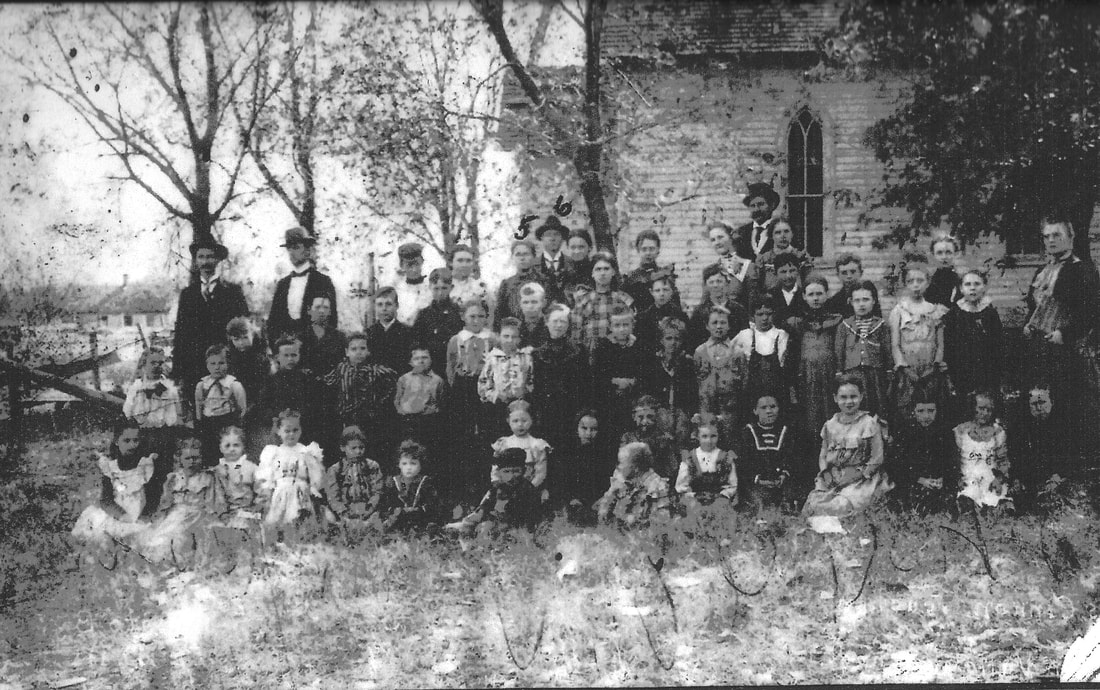


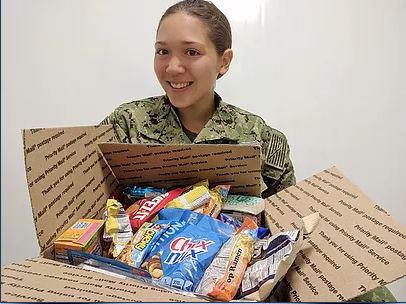


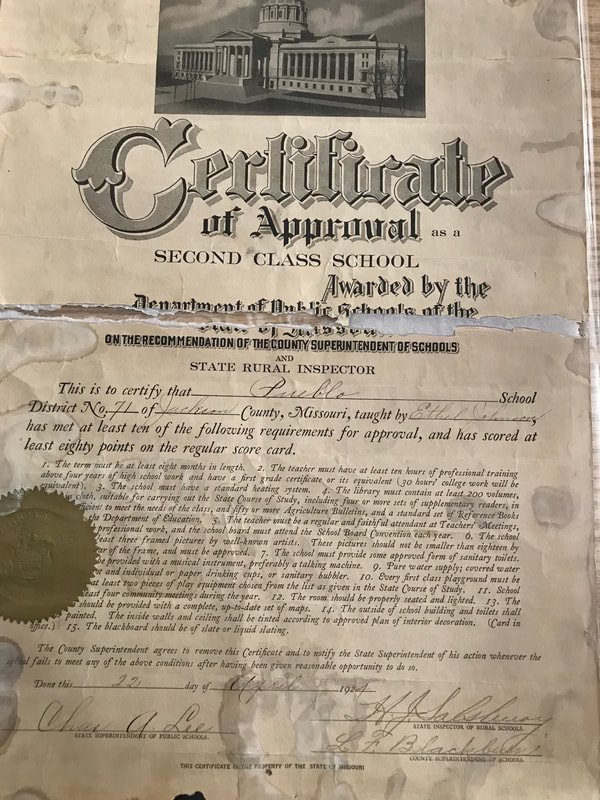
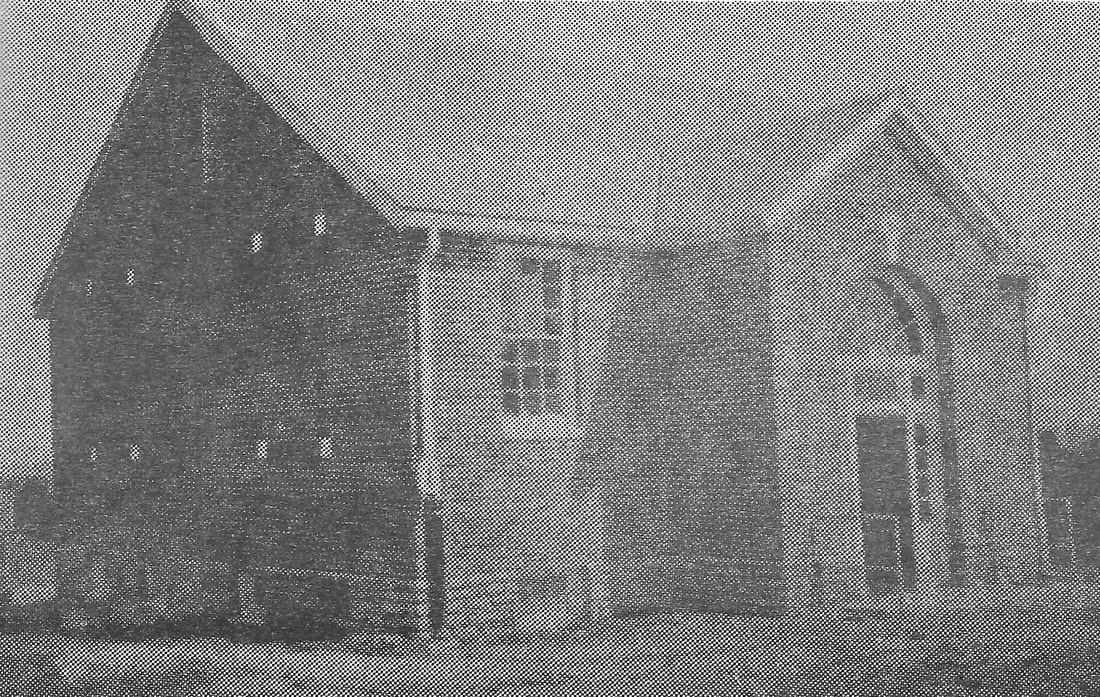
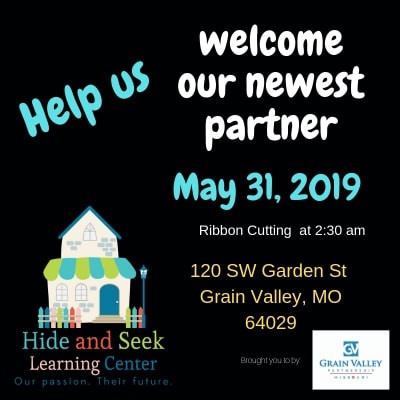
 RSS Feed
RSS Feed
